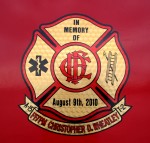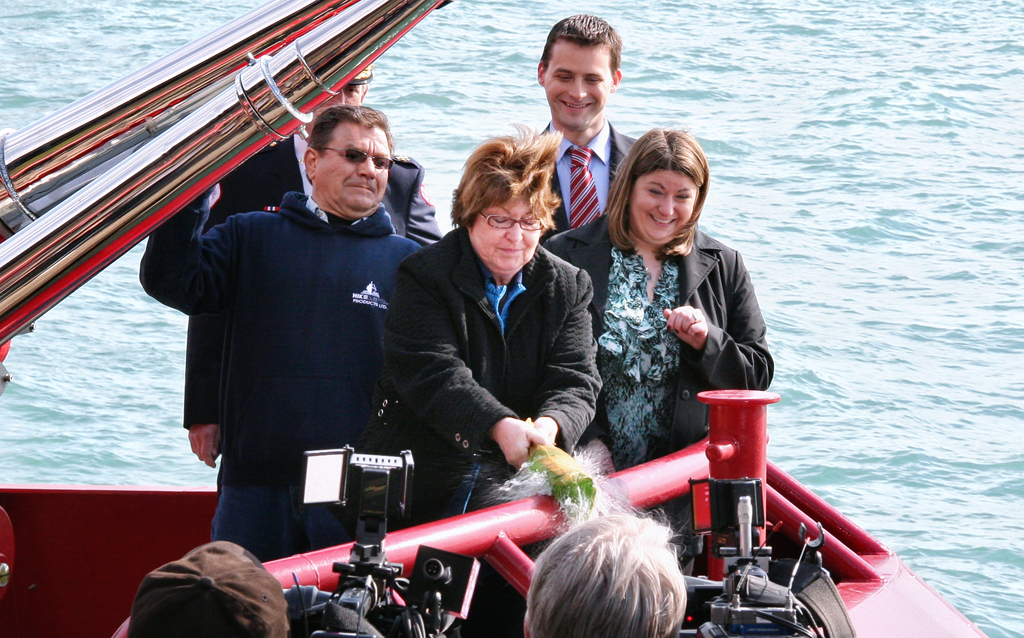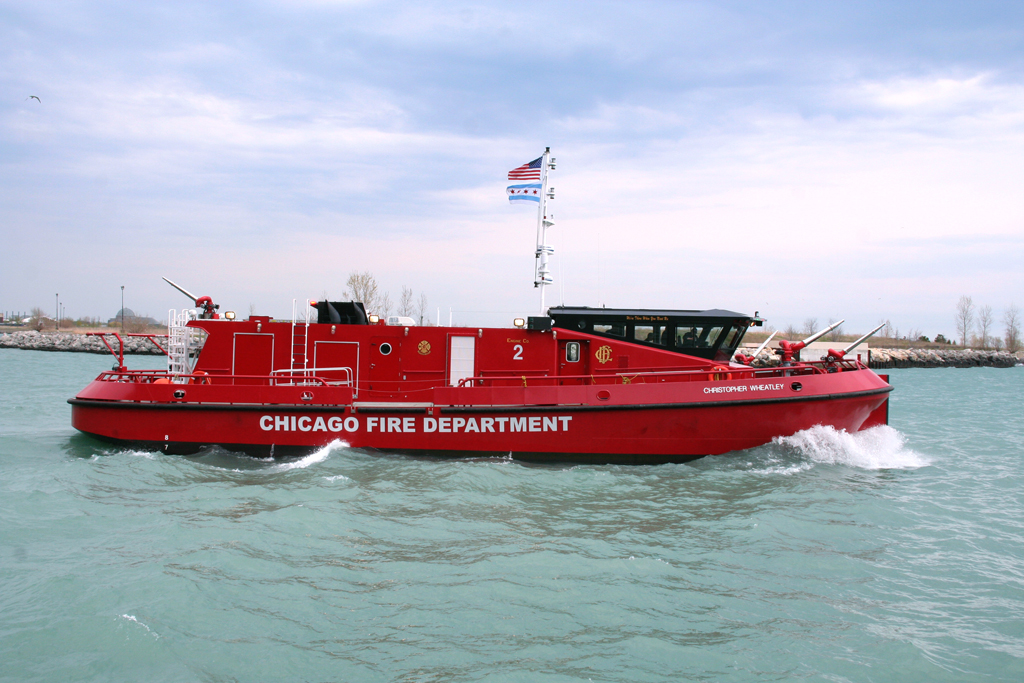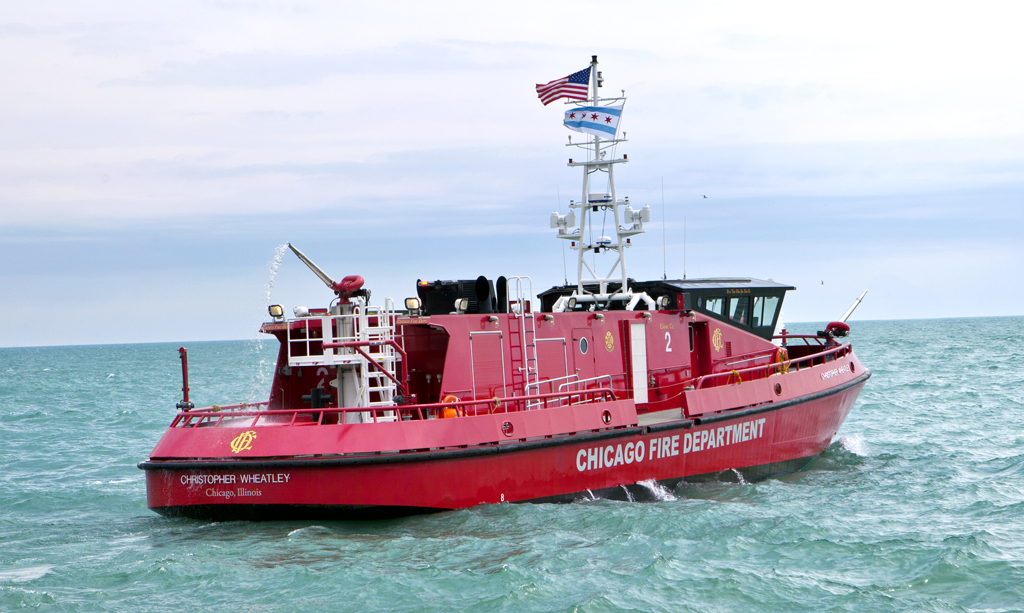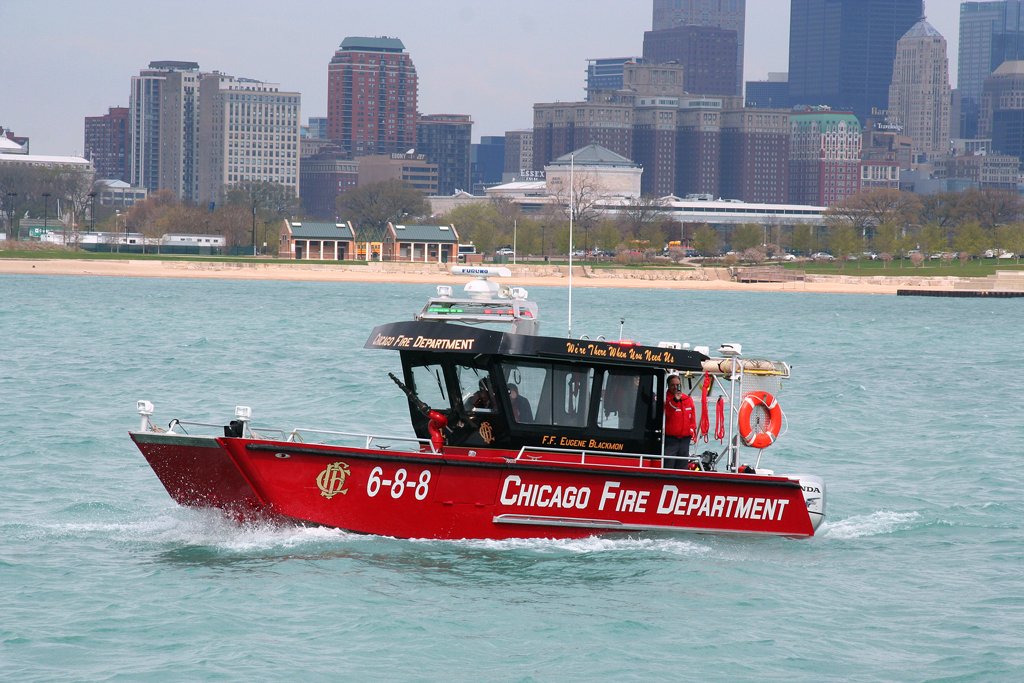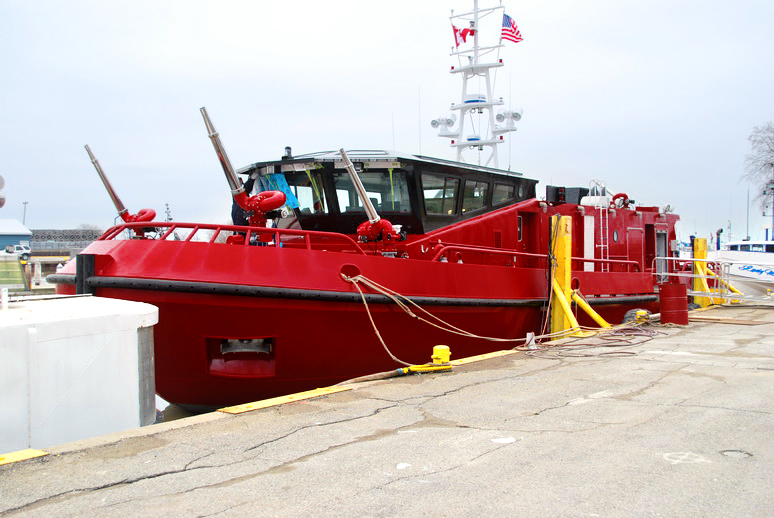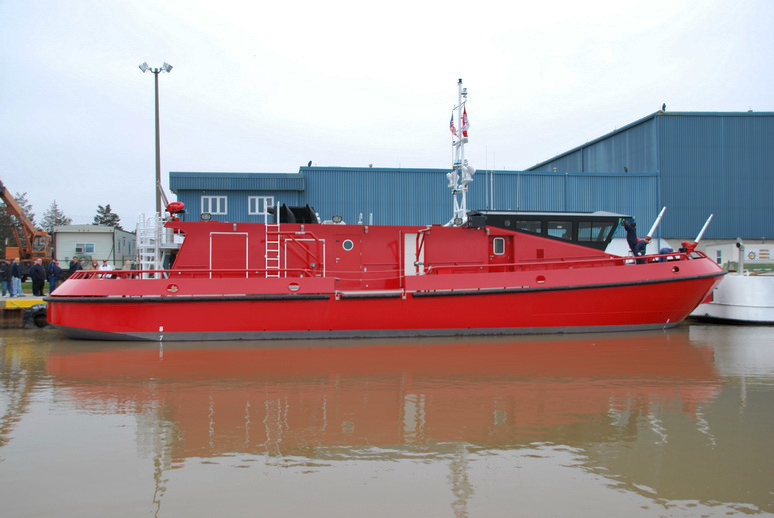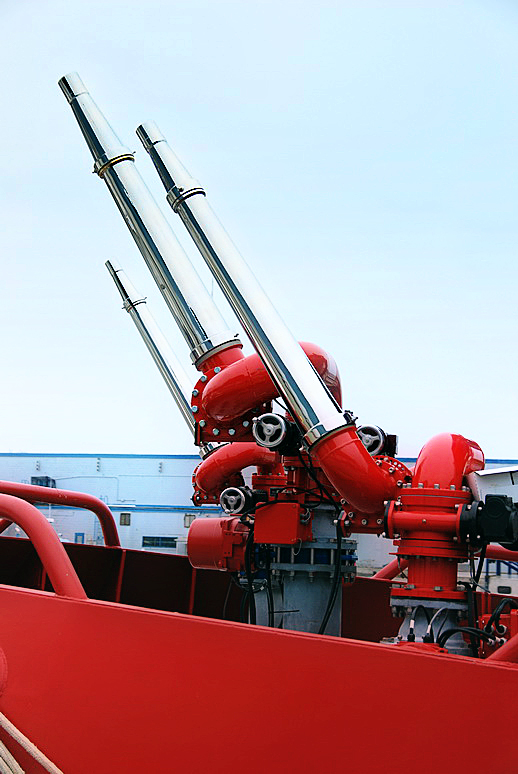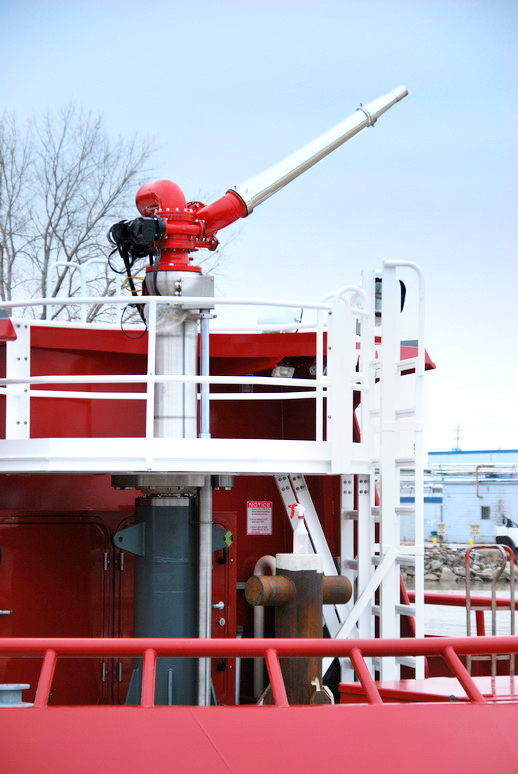Karl Klotz pointed us to a site HERE that outlines the specifications and some other interesting information about building the vessel and the requirements that the builder had to meet. Some of the highlights include:
As is immediately obvious from the photographs and accompanying General Arrangement drawing, this is a vessel for which the design was extremely customized to suit the operating environment. The fireboat was designed and built to operate year-round in Lake Michigan, the Chicago River, and surrounding harbours, which includes up to 30 cm (1′) of first year ice. The combination of a very shallow operating draft and an equally limiting air draft presented a significant design challenge, especially regarding weight estimation: if too heavy the vessel would near the bottom of the shallow river; if too light it would run afoul of the numerous low height bridges that grace the Chicago River through downtown Chicago. The new fireboat will be used to respond to any firefighting, rescue, hazmat decontamination, dive support operations, and other waterway related responses.
The fire-fighting capability is provided by two completely independent pump engines, also CAT model C32 diesels, each rated 745 kW at 1,800 rpm and driving an FFS model SFP250 x 350 fire pump, rated 1,590 m³ (7,000 US gallons) per hour at 10 bar (150 psi). There are four fire-fighting monitors:
Centre Forward – 22,710 Lpm (6,000 gpm) P&S Forward – 11,355 Lpm (3,000 gpm) Aft – 11,355 Lpm (3,000 gpm) The aft monitor is located atop a hydraulically elevating mast, provided by Hunger Hydraulics C.C. Ltd. This raises the monitor to a height of 9.14 metres (30′) above the water. In addition to the main monitors, there is an array of hose manifold connections on each side and at the forward end of the fireboat. There are nine connections on each side and four connections at the forward end of the vessel.
As a side note, the photographs featured were taken by Karl Klotz.
